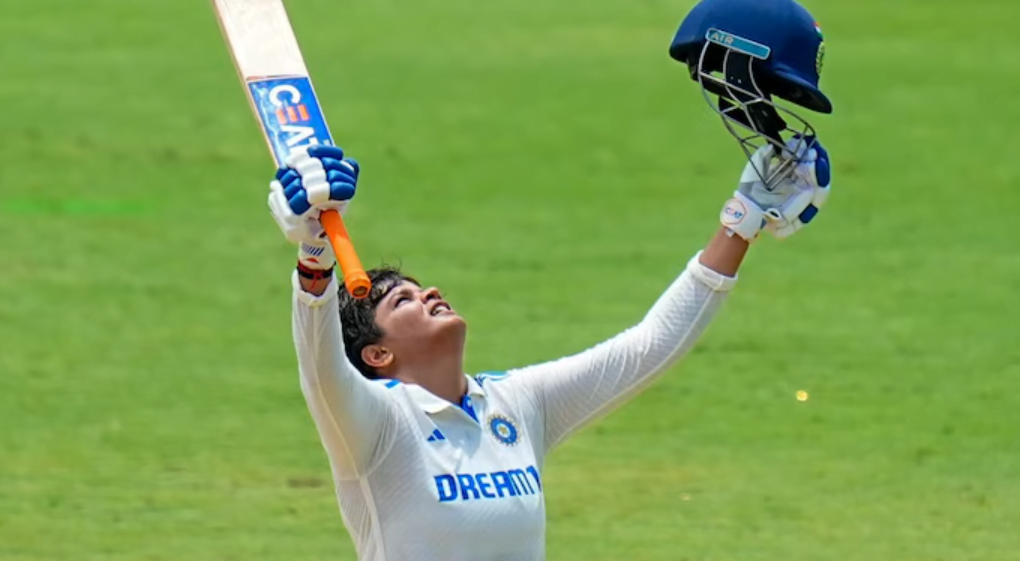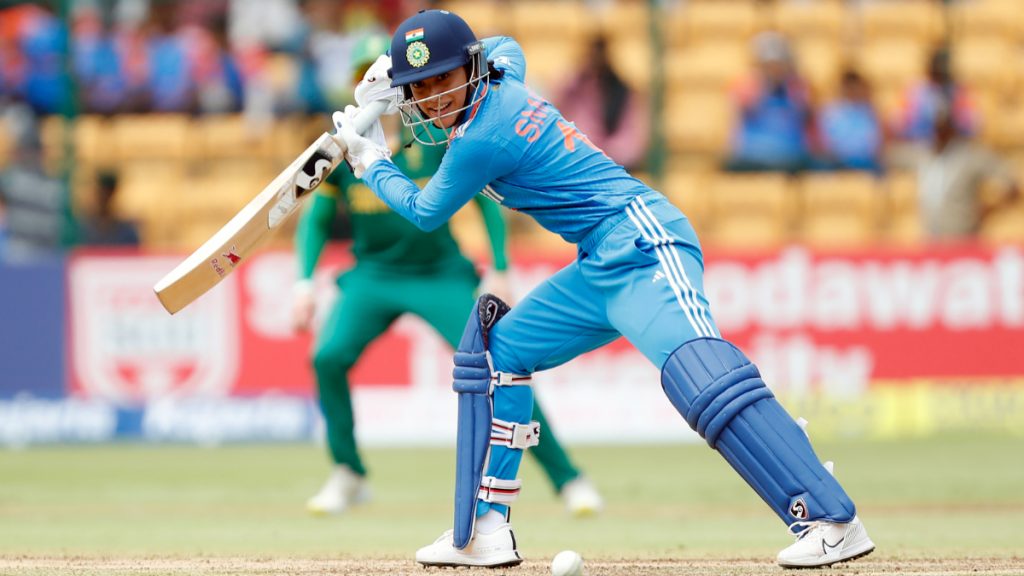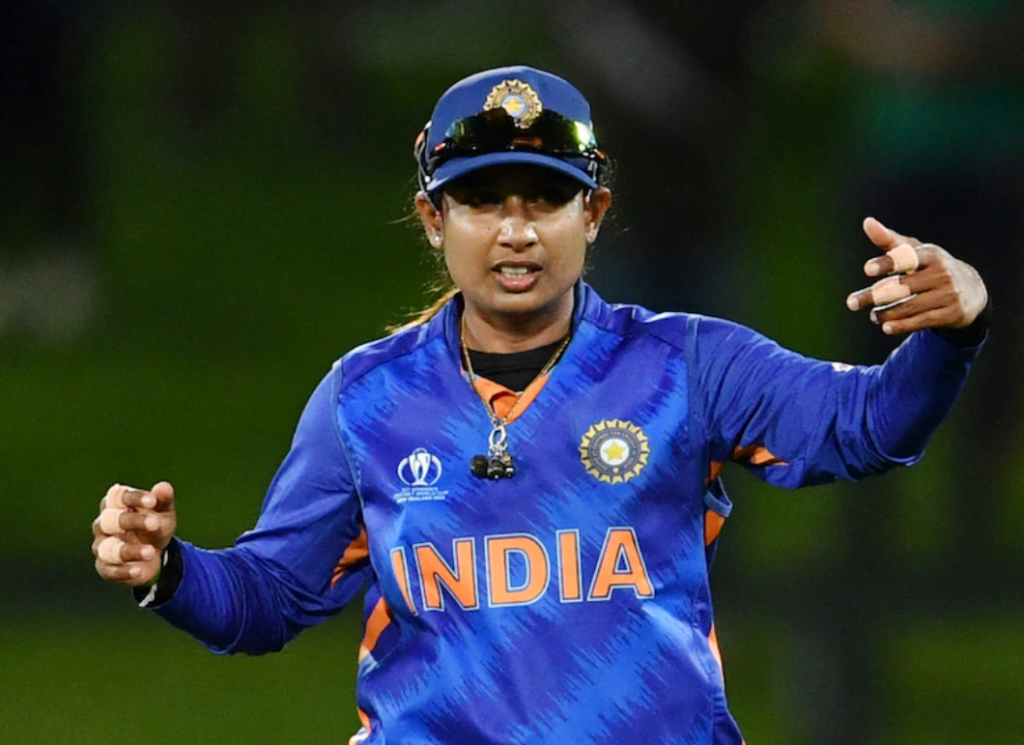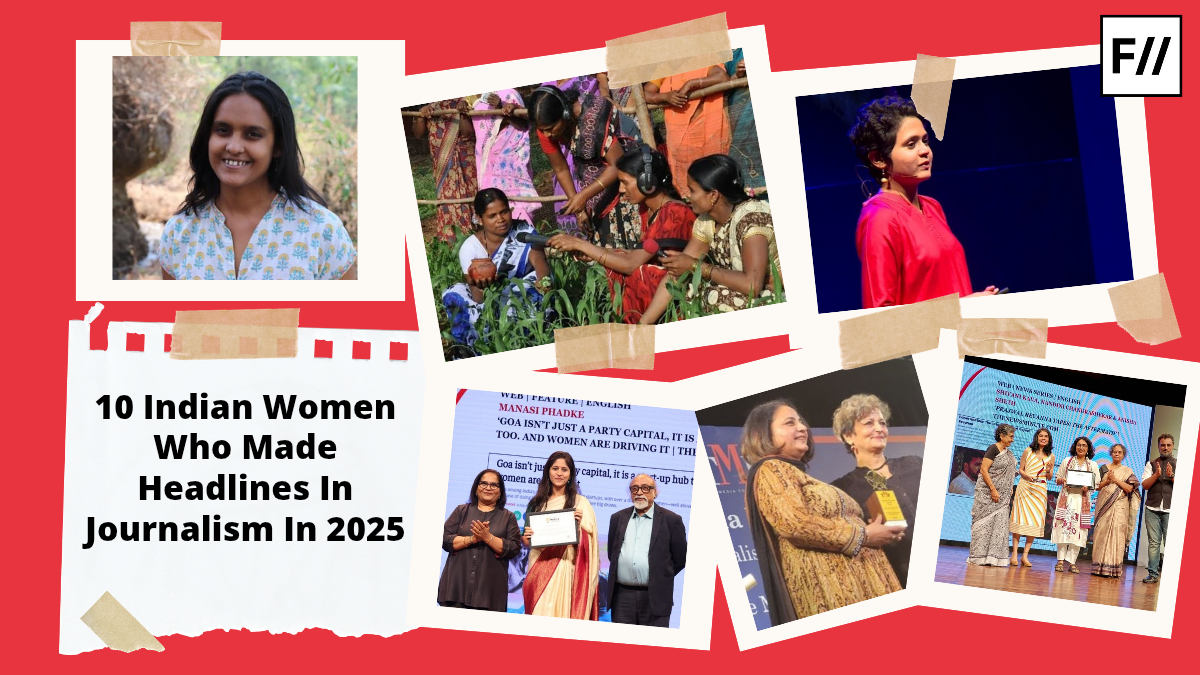While the entire nation was busy celebrating the T20 World Cup win of the men in blue, the India Women’s Cricket Team’s (IND-W) stellar, record-breaking one-off Test win against South Africa Women (SA-W) has gained little attention.
The dearth of media coverage and public excitement reflects the gender disparity and sexism that encompasses the world of cricket even today.
Snippets from IND-W’s record-breaking performance
In the IND-W vs SA-W played at the M.A. Chidambaram Stadium in Chennai from June 28 to July 1, the India team led by Harmanpreet Kaur exhibited exceptional performance from Day 1. IND-W recorded the highest team total in Tests in the match against SA.
The Day 1 opening duo of Shafali Verma and Smriti Mandhana made a historic record of 292 runs — the highest opening stand in women’s Tests. With an impressive score of 205 runs over 197 balls, Shafali Verma scored the fastest double-century in women’s Tests. Escalating the score to 525 for 4 wickets in 98 overs on the first day, the team’s score proved a good chase for the Proteas team.

Sneh Rana became the first spinner to record a 10-wicket haul in Women’s Tests. Rana’s eight-fer against 77 rewarded her a spot amongst India’s Neetu David (8/53 versus England, 1995) and Australia’s Ashleigh Gardner (8/66 versus England, 2023). Following the footsteps of bowler Jhulan Goswami (10/78 versus England, 2006), Rana became the second Indian to claim 10 wickets in a Women’s Test.
In her post-match interview upon being awarded the ‘player-of-the-match,’ title for the second time in the Test, Rana provides a biting reply to people’s perception of off-spinners, “Main aur ek cheez kehna chahti hu ki aapne interview ke starting mein poocha tha ki off-spinners ko khelna bohot hi easy rehta hai, kuch log aise sochte hai, lekin aaj kuch logo ko maybe thode answers mil gaye ho” (I wish to remark… In the beginning of the interview, you said that some people perceive that off-spinners are easy to play out. I am hoping that they got some answers [to that perception] today).
On Day 4, Nadine De Klerk’s fifty ensured that the Indian team would have to bat again to accomplish the 37-run target for victory. Overcoming the last straw of the game smoothly, the opening partnership of Shubha Shateesh and Shafali Verma brought the trophy home for India by 10 wickets.
Why no one is celebrating Women in Blue’s cricket triumph
India Women’s team’s exceptional performance has been consistent throughout all the Test matches played since December 2023, with an unbroken winning streak of 3-0 against England, Australia and South Africa. Displaying the fruits of their perseverance, training and hard work, the team added multiple historic records to its glory.

However, mainstream media evidences the disproportionate overshadowing of the India women’s cricket team’s achievements by the men’s T20 win. The pages dedicated to cricket within Indian Sports media websites during and after the World Cup largely featured the men’s team’s victory on their homepages, while one must specifically search to find articles dedicated to IND-W’s success.
Social media posts show a similar trend, clearly depicting a bias for the men in blue. The official Instagram page of the International Cricket Council (ICC) similarly features merely a few posts on women’s cricket, while it very consistently posts the highlights of almost entire matches for men’s cricket. Neither of BCCI’s official X pages, @BCCI or @BCCIWomen, shared any posts regarding India Women’s success. Though the media coverage of women’s cricket has improved over the past few years, it has failed to maintain pace with the overwhelming boom of media representation of the men’s team. Such a visible imbalance leads to the marginalisation of the women’s team within mainstream media.
Instead of recognising the Indian women cricketers for their individuality, it is a common strain amongst the audience to compare them to players from the men’s team. While Smriti Mandhana is recognised as “the female version of Virat Kohli,” Shafali Verma’s double ton against SA-W bestowed upon her the ‘title,’ “Virender Sehwag of Women’s Cricket.” In a nation where many people still falter when asked the name of a cricketer from the Indian women’s team, such monikers only make the issue a lot worse.
While India has come a long way in terms of the participation and performance of women in international cricket, gender stereotypes and sexism continue to govern the mainstream perception of people. In a women’s versus men’s cricket debate, one always comes across the argument that the physical prowess and capabilities of a male cricketer far exceed that of a woman cricketer.

IND-W’s ex-captain Mithali Raj in a conversation with Taapsee Pannu argues against such comparisons, “Men’s cricket aur women’s cricket bohot alag hai, in terms of jaise strength hai, woh hum kabhi match nahi kar sakte, par skill-wise men aur women dono hi acche hai. And abhi recent past mein women’s cricket kaafi accha kar raha hai, aur bohot lambe lambe chhakke marne waale ladkiyan bhi hai hamare team mein. Toh differences toh mai yeh nahi bolungi ki as a cricketer mai differences dekhna chahungi, aur logon ko bhi bolungi ki comparisons mat kiya kijiye, men’s cricket aur women’s cricket. Women’s cricket ko as a sport aap dekhenge toh aap bohot enjoy karoge,” (Men’s and women’s cricket are very different, for instance, in terms of strength, we cannot match them. But skill-wise, both men and women are commendable. In the recent past, the women’s cricket team [of India] has been doing really well, and our team does have girls who can hit long sixes. As a cricketer, I would not want to see differences, and I would also urge people to not make such comparisons. You will really enjoy watching women’s cricket if you view it as a sport).
The gender bias observed in the viewership that men’s and women’s cricket garner is not only contingent on age-old stereotypes about ‘femininity,’ and ‘masculinity,’ but also on the differential economic investments that the Board of Control for Cricket in India or BCCI undertakes for the two teams. Despite being one of the richest sports bodies in the world, the BCCI continues to provide significantly less funding for the women’s team. While wage disparity between the men’s and women’s teams has been superficially addressed by the 2022 BCCI announcement for pay equity, the ground realities remain to be changed. The pay gap further solidifies the undervaluing of women in sports by its potential audience. The lack of proper promotion of women’s matches moreover perpetuates the cycle of seeming disinterestedness of the public in women’s cricket.
Such trends point to the fact that though women in cricket have achieved huge heights in India, the support and viewership compared to the matches played by the men’s teams remain significantly low. In an attempt to satiate the seemingly hungry crowd for news about men’s cricket in India, social media and mainstream sports websites continue to prioritise the men in blue over women. Increased and responsible media coverage of the historic feats achieved by the India women’s cricket team can become a starting point towards attaining gender equality in sports.
About the author(s)
Madhusmita Mukherjee (she/they) is a queer feminist writer and photographer from Assam who is passionate about advocating gender equality and social justice. She completed her postgraduation in English from the University of Delhi (2022-24). Her academic interest lies in gender studies, media memory and cultural studies. Her recent publication features in the Zubaan anthology Riverside Stories: Writings from Assam edited by Banamallika.





